For the love of vultures
Willie Oliver
The Lappet-faced Vulture, Africa’s largest and most impressive bird of prey, is aptly referred to as the King Vulture over much of its range.
These awe-inspiring birds first caught the attention of former nature conservation official Peter Bridgeford and his wife, Marilyn, way back in the 1980s when he was stationed in the Skeleton Coast Park. The couple recorded breeding attempts in the park and as Peter recalls, “Although our knowledge and equipment were equally poor, we had plenty of enthusiasm.“
Their first chance to ring Lappet-faced Vulture chicks came in 1986 and 1987 after Peter was transferred to the Namib-Naukluft Park, which has one of the highest concentrations of this species in Africa. Enthusiasm soon turned to a life-long passion and the couple ringed 15 chicks with the help of enthusiastic conservationists, friends and supporters in 1991.
Those early years required laborious work and dedication - driving along dry river washes and locating possible nests by keeping an eye out for adults sitting atop a tree. Without knowing whether the adult was simply roosting or breeding, ringers had to look for telltale signs underneath the tree and then using the ‘Namib periscope’ - a telescopic pole with a rear-view mirror fixed to the top end of the pole - to check whether there is a chick in the nest.
Peter still uses the Namib periscope, but says, “… like everything these days it has been upgraded. Holger Kolberg (of the Ministry of Environment and Tourism) has fitted a GoPro to the end and then looks on his tablet. If we ring together, he uses that. When I ring without him, I use the original Namib periscope. It still works!”
Financial support for the project grew over the years, as did the number of vulture friends willing to assist. The Namibian section of the Vulture Study Group, a working group of the Endangered Wildlife Trust, was established in 1997 with Peter as the local coordinator. The group was renamed Vultures Namibia to reflect its local identity in 2005.
Locating nests
Locating nests with chicks became a lot easier when the first aerial survey was conducted in 2002. These surveys are conducted in early October when most chicks are large enough to ring, but are still unable to fly. GPS coordinates of occupied nests are taken by observers during the aerial surveys. Once the aerial survey has been completed, logistics for the ringing and tagging are put in place.
An extension ladder is used to get to the nest, but in some cases this is easier said than done - especially if the tree is 15 metres high. Dimensions of the nest and its height are taken and the chick is then brought down.
Numbered metal rings and a unique combination of coloured rings were attached to the chick’s legs for individual identification until 2006 when patagial tags were introduced. These bright yellow tags with alpha-numerical numbers are attached to the chick’s wing and have made identification much easier. The length of the tail feathers, length and width of the wing and the weight of each chick is also recorded - information that is useful to determine the estimated age of the chick.
Regional Database
The numbers on the metal ring and the alphanumerical patagial tag, GPS location and date of the ringing are provided to the South African Bird Ringing Unit (SAFRING), which makes identification of the birds possible. The unit, which is part of the Animal Demography Unit at the University of Cape Town, has been maintaining a database since 1948.
The number of chicks ringed and tagged in the Namib-Naukluft Park now stands at 1 260. An extensive database has been built up, providing invaluable information about breeding success (dead chicks, unhatched or broken eggs), poisoning and the dispersal of Lappet-faced Vultures tagged in the Namib-Naukluft Park. A total of 480 individually marked birds have been re-sighted to date.
Over the years, the number of chicks ringed and tagged has varied considerably, with a record number of 101 during the 2014 season. One of the important factors is the increased experience of the pilots and the ringers which has made it a lot easier to locate nests with chicks. But several other factors could also account for these variations, among them the availability of food (during droughts more animals die, providing more food), climatic conditions and the poisoning of vultures.
Improved Understanding
The extension of the vulture-ringing project to commercial farms in 2003 has created a better understanding and appreciation of the important roles vultures play in the ecology, as well as the impact of the indiscriminate use of poisons on Namibia’s vulture populations. It has also provided valuable data on the distribution of vultures in the east of the country.
The list of vulture friends, volunteers and companies that have contributed to the work of Vultures Namibia over many years is too long to mention them all. But a few names of those that have helped to manage the affairs of Vultures Namibia deserve special mention: Holger Kolberg of Ministry of Environment and Tourism (MET), Peter Keil of Skycor Aviation, Mark Boorman, Sandra Dantu and Hartmut Kolb.
Should you identify a marked Lappet-faced Vulture, please email Peter Bridgeford on [email protected] and provide the tag number, as well as the date and location of the sighting, or call him on +264 81 260-7375.
The Lappet-faced Vulture, Africa’s largest and most impressive bird of prey, is aptly referred to as the King Vulture over much of its range.
These awe-inspiring birds first caught the attention of former nature conservation official Peter Bridgeford and his wife, Marilyn, way back in the 1980s when he was stationed in the Skeleton Coast Park. The couple recorded breeding attempts in the park and as Peter recalls, “Although our knowledge and equipment were equally poor, we had plenty of enthusiasm.“
Their first chance to ring Lappet-faced Vulture chicks came in 1986 and 1987 after Peter was transferred to the Namib-Naukluft Park, which has one of the highest concentrations of this species in Africa. Enthusiasm soon turned to a life-long passion and the couple ringed 15 chicks with the help of enthusiastic conservationists, friends and supporters in 1991.
Those early years required laborious work and dedication - driving along dry river washes and locating possible nests by keeping an eye out for adults sitting atop a tree. Without knowing whether the adult was simply roosting or breeding, ringers had to look for telltale signs underneath the tree and then using the ‘Namib periscope’ - a telescopic pole with a rear-view mirror fixed to the top end of the pole - to check whether there is a chick in the nest.
Peter still uses the Namib periscope, but says, “… like everything these days it has been upgraded. Holger Kolberg (of the Ministry of Environment and Tourism) has fitted a GoPro to the end and then looks on his tablet. If we ring together, he uses that. When I ring without him, I use the original Namib periscope. It still works!”
Financial support for the project grew over the years, as did the number of vulture friends willing to assist. The Namibian section of the Vulture Study Group, a working group of the Endangered Wildlife Trust, was established in 1997 with Peter as the local coordinator. The group was renamed Vultures Namibia to reflect its local identity in 2005.
Locating nests
Locating nests with chicks became a lot easier when the first aerial survey was conducted in 2002. These surveys are conducted in early October when most chicks are large enough to ring, but are still unable to fly. GPS coordinates of occupied nests are taken by observers during the aerial surveys. Once the aerial survey has been completed, logistics for the ringing and tagging are put in place.
An extension ladder is used to get to the nest, but in some cases this is easier said than done - especially if the tree is 15 metres high. Dimensions of the nest and its height are taken and the chick is then brought down.
Numbered metal rings and a unique combination of coloured rings were attached to the chick’s legs for individual identification until 2006 when patagial tags were introduced. These bright yellow tags with alpha-numerical numbers are attached to the chick’s wing and have made identification much easier. The length of the tail feathers, length and width of the wing and the weight of each chick is also recorded - information that is useful to determine the estimated age of the chick.
Regional Database
The numbers on the metal ring and the alphanumerical patagial tag, GPS location and date of the ringing are provided to the South African Bird Ringing Unit (SAFRING), which makes identification of the birds possible. The unit, which is part of the Animal Demography Unit at the University of Cape Town, has been maintaining a database since 1948.
The number of chicks ringed and tagged in the Namib-Naukluft Park now stands at 1 260. An extensive database has been built up, providing invaluable information about breeding success (dead chicks, unhatched or broken eggs), poisoning and the dispersal of Lappet-faced Vultures tagged in the Namib-Naukluft Park. A total of 480 individually marked birds have been re-sighted to date.
Over the years, the number of chicks ringed and tagged has varied considerably, with a record number of 101 during the 2014 season. One of the important factors is the increased experience of the pilots and the ringers which has made it a lot easier to locate nests with chicks. But several other factors could also account for these variations, among them the availability of food (during droughts more animals die, providing more food), climatic conditions and the poisoning of vultures.
Improved Understanding
The extension of the vulture-ringing project to commercial farms in 2003 has created a better understanding and appreciation of the important roles vultures play in the ecology, as well as the impact of the indiscriminate use of poisons on Namibia’s vulture populations. It has also provided valuable data on the distribution of vultures in the east of the country.
The list of vulture friends, volunteers and companies that have contributed to the work of Vultures Namibia over many years is too long to mention them all. But a few names of those that have helped to manage the affairs of Vultures Namibia deserve special mention: Holger Kolberg of Ministry of Environment and Tourism (MET), Peter Keil of Skycor Aviation, Mark Boorman, Sandra Dantu and Hartmut Kolb.
Should you identify a marked Lappet-faced Vulture, please email Peter Bridgeford on [email protected] and provide the tag number, as well as the date and location of the sighting, or call him on +264 81 260-7375.



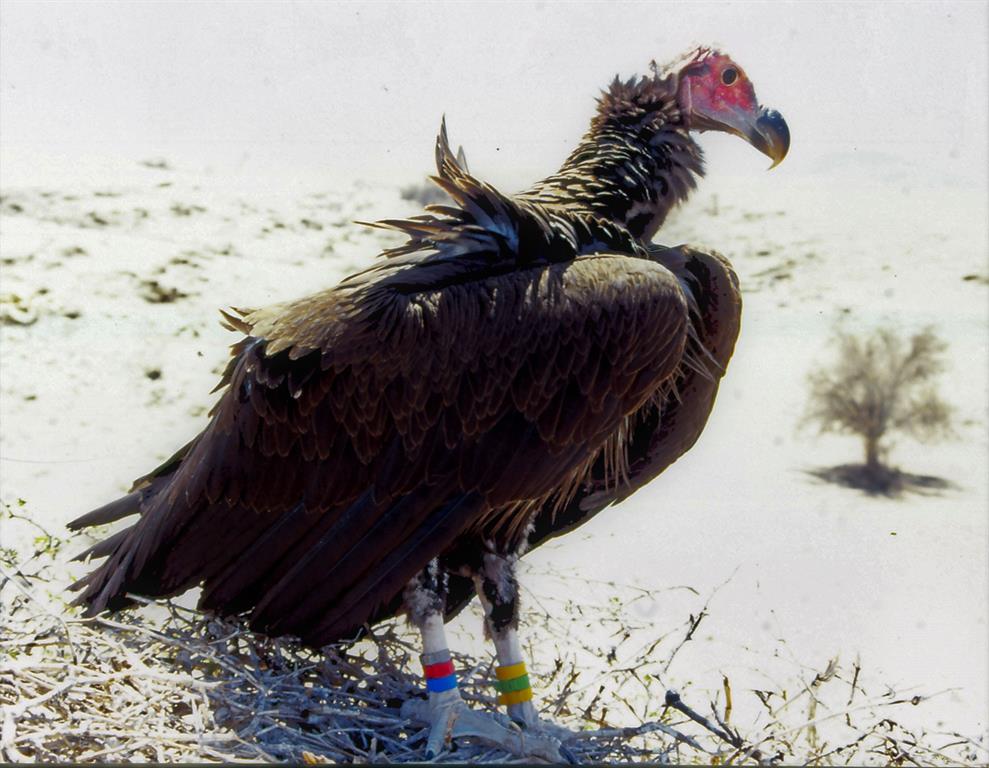

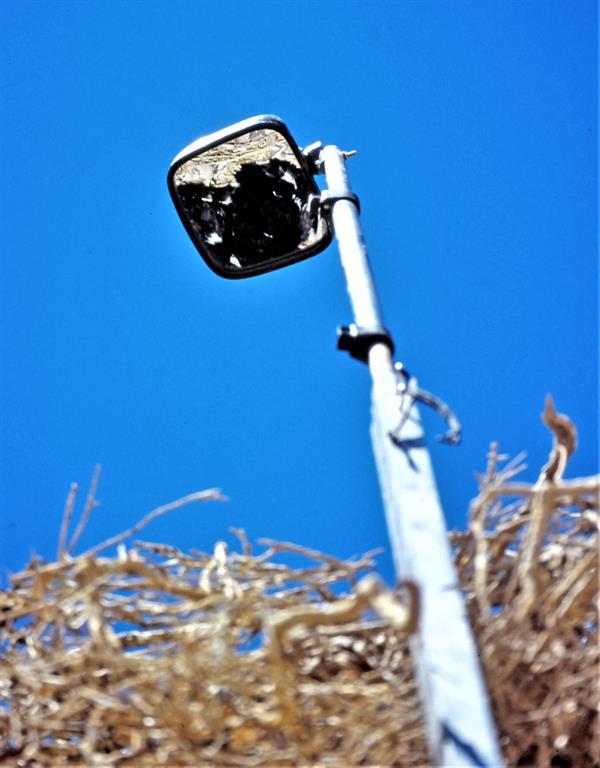
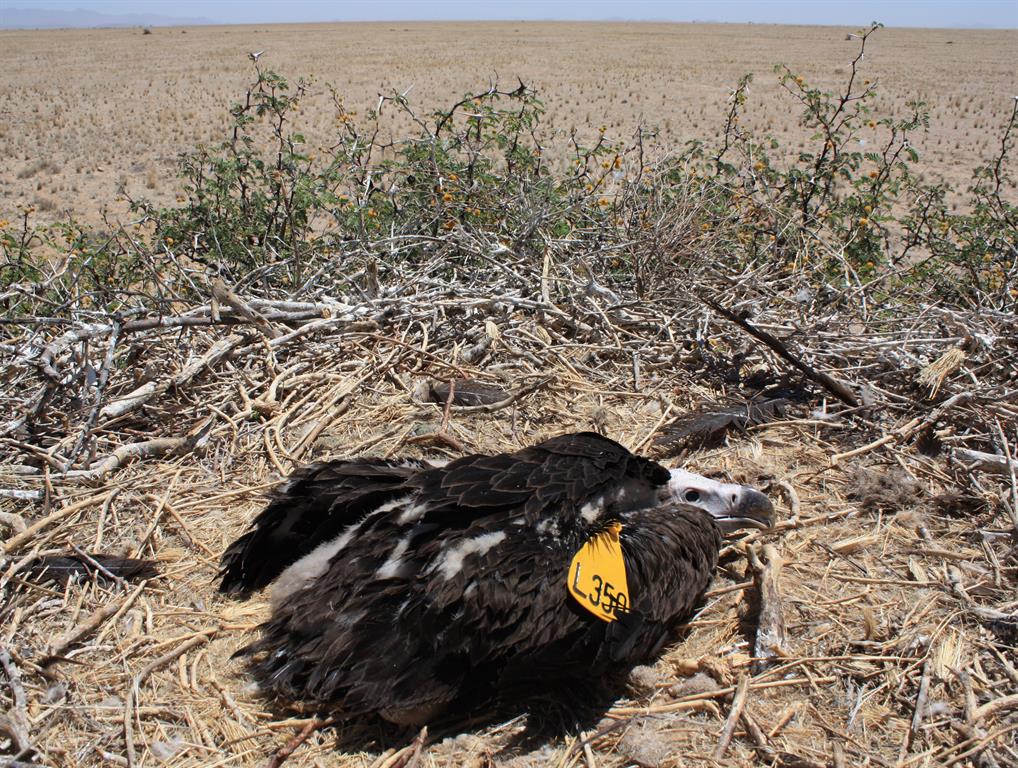

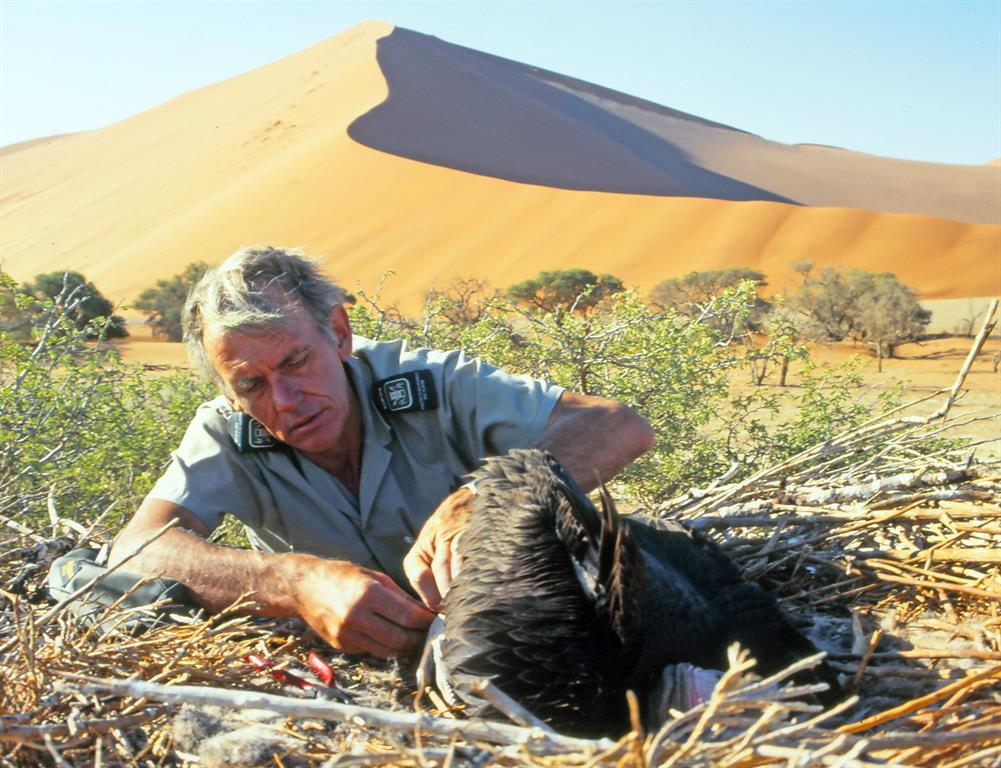
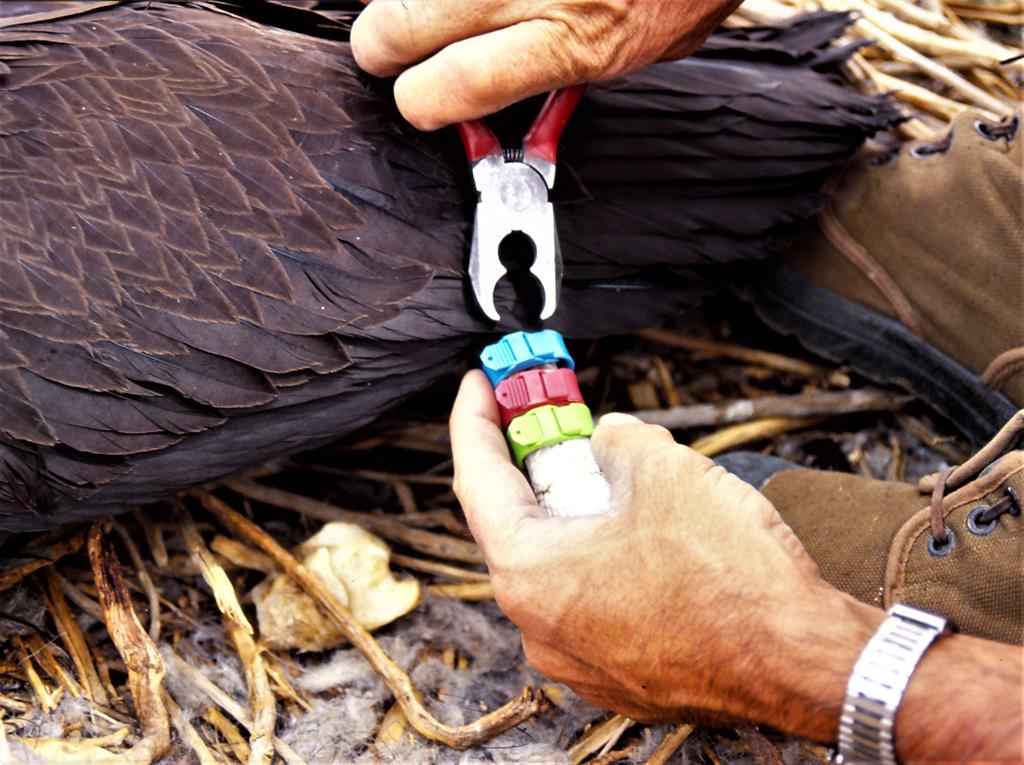


Kommentar
Allgemeine Zeitung
Zu diesem Artikel wurden keine Kommentare hinterlassen